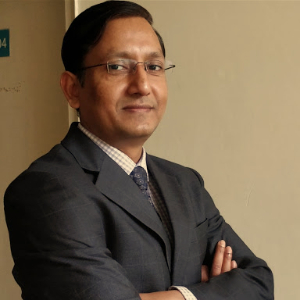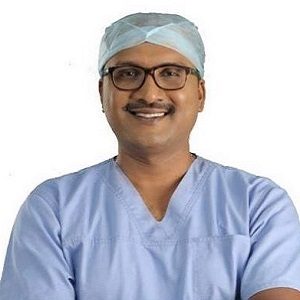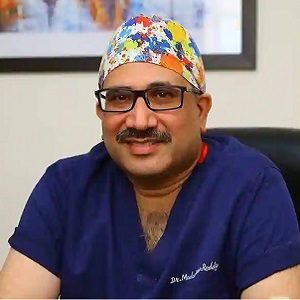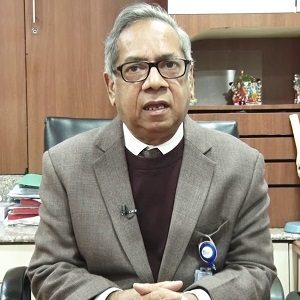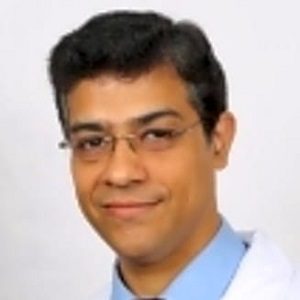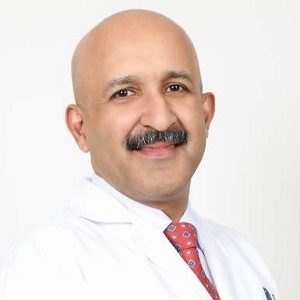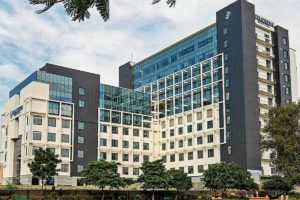Best Doctors in India for Hip Dysplasia Treatment
- Orthopedic & Spine Surgeon, New Delhi, India
- Over 14 years’ experience
Profile Highlights:
- Dr. Om Prakash Gupta is a reputed Spine Surgeon in India.
- He is currently functioning as a Consultant – Orthopedics & Spine at Max Smart Super Speciality Hospital, New Delhi
- He has over 14 years of experience.
- Orthopedic Surgeon, Chennai, India
- Over 21 years’ experience
Profile Highlights:
- Dr. A Navaladi Shankar is a well-known spine surgeon and orthopedist in Chennai with 21+ years of experience.
- He completed an MBBS from Al-Ameen Medical College, MNAMS from the National Board of Education, and a Diploma from Sri Ramachandra Medical College and Research Institute.
- Dr. Shankar holds expertise in Laminectomy, Lower Back Pain and Neck Pain Treatment, Arthritis Management, and Trauma Surgery.
- Orthopaedic Surgeon, Chennai, India
- Over 22 years’ experience
Profile Highlights:
- Dr. Kornad P Kosygan is one of the few Orthopedic surgeons in India with a double FRCS degree.
- He has been successful in the diagnosis and treatment of severe Orthopedic problems throughout his career.
- Dr. Kornad is invited as an exclusive Orthopedics Specialist from over six countries in the Asian and European subcontinent.
- Dr. Kosygan has sought extensive training and exposure in the department of Orthopaedics.
- Orthopaedic Surgeon, Chennai, India
- Over 25 years’ experience
Profile Highlights:
- Dr. Madan Mohan Reddy is one of the most acclaimed Orthopedic Surgeons in India with tons of experience and knowledge that he gained over the course of years.
- He has attended several courses across the world, in countries like Switzerland, Germany, Australia, and Italy.
- Orthopedic Surgeon, New Delhi, India
- Over 42 years’ experience
Profile Highlights:
- As one of the most experienced orthopedic surgeons in Delhi, Dr. Chander Shekhar has been practicing for 42 years. He is associated with Indraprastha Apollo Hospital as a consultant.
- Dr. Chander Shekhar is interested in Knee and Hip joint replacement and revision.
- He honed his expertise by completing a fellowship in shoulder and knee arthroscopy in the United States. Besides replacement & revision surgery, he has expertise in Birmingham Hip Resurfacing, BHR with stem, and Minimally Invasive Surgery.
- Orthopedic Surgeon & Spine Surgeon, New Delhi, India
- Over 18 years’ experience
Profile Highlights:
- Dr. Amit Kumar Agarwal is a Delhi-based orthopedic, joint replacement, and spine surgeon consultant who has been assuring joint and spine health for about 18 years.
- Dr. Agarwal has garnered numerous accolades for his work in treating Joints and Musculoskeletal Disorders, pain management, sports injury, and articular degeneration during his career.
- Orthopedic Surgeon, New Delhi, India
- Over 22 years’ experience
Profile Highlights:
- Dr. Vibhu Bahl is one of the finest Orthopedist and Joint Replacement Surgeon in India. He has experience of over 22 years in this field.
- Dr. Bahl has successfully performed multiple complex and primary total knee and hip replacements over his career. Besides these, he specializes in computer-assisted total knee replacements. Patients seeking Arthroscopy for shoulder dislocation, degeneration, and repair must consult him.
- Dr. Bahl participated as a Faculty in many Arthroscopy conferences.
- He is passionate about research and has a long list of publications in prestigious national and international journals.
- Orthopedist, New Delhi, India
- Over 20 years’ experience
Profile Highlights:
- Dr. Havind Tandon is one of the best Orthopedists in Delhi, having nearly two decades of experience. He practices as a senior consultant at Indraprastha Apollo Hospital.
- Many patients who need a knee replacement, repair, or osteotomy have benefitted from his enthusiasm and skill in the field.
- Dr. Havind Tandon worked with Jhonson & Jhonson as a Facilitator for the National Joint Replacement Program.
- Pain management counseling, Joint Replacement Surgery, Spinal Therapy, reverse shoulder replacement, neuropathy assessment, foot drop, treatment of complex fractures, and Adult Joint Reconstruction are just a few of the vital services provided by Dr. Havind Tandon.
- Dr. Tandon was also recognized for his work in the field of research.
- Orthopedic and Spine Surgeon, Gurugram, India
- Over 25 years’ experience
Profile Highlights:
- With over 25 years of experience, Dr. Rajesh Kumar Verma can be generally considered a boon for people suffering from complex, bone, joint, or spine disorders.
- Currently known as one of India’s leading spine experts in India, Dr. Rajesh Kumar Verma performs as many as 50 surgeries in a month. The types of surgeries he performs include all types of spine surgeries, joint replacements, as well as complex trauma surgeries.
- Orthopedic Surgeon, Chennai, India
- Over 25 years’ experience
Profile Highlights:
- Dr. Krishnamurthy K provides consultation at the Apollo hospitals of Chennai.
- He has also worked as a senior registrar and assistant surgeon earlier and has sound knowledge of his field.
- One can reach Dr. Krishnamurthy K for treatment of fractures, joints, shoulders, knees, hip replacement, etc.
Best Hospitals in India for Hip Dysplasia Treatment
Fortis Hospital, Shalimar Bagh
- City: New Delhi, India
Hospital Highlights:
- Fortis Hospital in Shalimar Bagh is a multi-super specialty hospital that strives to provide world-class patient care by leaving no stone unturned.
- Fortis, Shalimar Bagh, with 262 beds and a 7.34-acre footprint, provides the best level of medical care through its team of doctors, nurses, technicians, and management professionals.
Reliance Hospital, Mumbai
- City: Mumbai, India
Hospital Highlights:
- Reliance Hospital is one of the best super-specialty care hospitals in Navi Mumbai.
- The main purpose of this hospital is to become a trustworthy place for the best health and hope for society. The hospital is well connected to the suburbs of Mumbai and Navi Mumbai.
- The hospital has various specialty departments, viz., Accident & Emergency, Anesthesiology, Dental Services, Dermatology, Diabetology, Dietetics Nutrition, Endocrinology, ENT, Gastroenterology, General Surgery, Gynaecology And Obstetrics, Hepato Pancreato Biliary Surgery, Infectious Disease, Internal Medicine, Interventional Radiology, Laboratory Medicine, Minimal Access Laparoscopic Surgery, Nephrology, Neurosciences, Opthalmology, Orthopaedics, Paediatrics, Pain Management Palliative Care, Physical Medicine Rehabilitation, Plastic And Reconstructive Surgery, Psychiatry, Pulmonary Medicine, Radiology, Rheumatology, Transplant, Urology Andrology, Vascular Surgery
Lilavati Hospital & Research Centre, Mumbai
- City: Mumbai, India
Hospital Highlights:
- Lilavati Hospital & Research Centre is India’s premier multi-speciality tertiary care hospital and has been recognised as a global medical excellence centre.
- Lilavati Hospital & Research Centre has built an unrivalled level of trust with its patients over the years, thanks to a solid foundation that comprises cutting-edge facilities, the best medical competence, research, education, and charity endeavours.
- The hospital is quite proud of the fact that it now serves patients from all kinds of backgrounds, not just from the United States but from all around the world.
- The hospital has a total of 323 beds, one of the largest Intensive Care Units (ICUs), 12 Operation Theatres with modern amenities, over 300 consultants, and almost 1,800 personnel.
Venkateshwar Hospital, Dwarka, New Delhi
- City: New Delhi, India
Hospital Highlights:
- State-of-the-art technology and devoted healthcare professionals have been brought together under one roof at Venkateshwar Hospital to provide genuine medical care. The hospital’s professionals work together as a team to deliver the best possible treatment to their patients, using the most sophisticated equipment and information technology.
- Venkateshwar Hospital’s mission is to attain global excellence in healthcare by employing evidence-based, ethical clinical practices and cutting-edge technology by a team of highly skilled experts.
Hip Dysplasia
Hip dysplasia is a medical condition where a hip socket doesn’t cover the ball portion of the upper thighbone fully. This allows your hip joint to become partially or completely dislocated. Generally, most people with hip dysplasia are born with this condition. Doctors generally check a baby for signs of hip dysplasia shortly after they are born, and during visits. If hip dysplasia gets diagnosed during early infancy, it may be easily corrected using a soft brace. In milder cases, the patient generally does not show symptoms until he/she is a teenager or a young adult.
This condition can cause damage to the cartilage lining the joint, and it can also hurt the soft cartilage or labrum that rims the socket portion of the hip joint. This is known as a hip labral tear.
In older children and young adults, surgery might be required to move the bones into the proper positions for smooth movement of the joints.
Symptoms
The signs and symptoms of hip dysplasia generally depend on age. Babies with this condition generally have one leg that is longer than the other. Kids with this condition might have one hip that is less flexible or limp while walking.
If you are a teenager or a young adult, the first signs that you are going to notice are likely going to be hip pain or a limp. You might also experience ‘popping’ or ‘clicking’ in the joint’, although these might also be symptoms of other hip disorders.
The pain usually comes on when you are doing any physical activity, and it is generally located in the front of the groin. But you might also experience discomfort in the side or back of your hip. It may start out mild and happen occasionally, and can over time become more intense and frequent. Half of the patients with hip dysplasia also suffer from pain at night.
The pain may also cause a mild limp. You are likely to develop a limp if your muscles are weak, or if you have a bone deformity or limited flexibility in the hip joint. If you have a limp for any of those reasons, you probably won’t experience any pain.
Causes & risk factors
Hip dysplasia is known to run in families. It generally occurs more in girls as compared to boys. It shows up in babies since the hip joint is made of soft cartilage when one is born. Over time, it hardens into bone. The ball and socket help mold each other during this time, and therefore if the ball is not fitting properly into the socket, the socket can end up too shallow and not form completely over the ball.
Few reasons why this can happen right before a baby is born, include the following:
- It is the mother’s first pregnancy.
- The baby is in the breech position, which means the rear, not the head is toward the birth canal.
- The baby is huge or there is a condition where there is less amniotic fluid in the sac that the baby has lived in throughout the pregnancy, which limits the movement of the baby.
All of these factors can lead to the amount of space in the womb reducing which can make things crowded for the baby and thus, move the ball out of its proper position.
Diagnosis
During a visit, doctors generally check for hip dysplasia by moving the legs of an infant into different positions that can help indicate whether the hip joint fits together well.
Mild cases of hip dysplasia might be difficult to diagnose and may not cause any problems until you are a young adult. If your doctor is suspecting dysplasia, then he/she will likely suggest imaging tests, such as X-rays or magnetic resonance imaging.
Treatment
Babies
How the condition is going to be treated will depend on the age of your child as well as the severity of the condition. Babies that are diagnosed earlier can wear a soft brace that is going to hold the ball of the joint in the socket for some months. This will help to help mold it into the proper shape. A baby which is older than 6 months might require a full-body cast or surgical intervention.
Older children and adults
Surgery is the only treatment for older children as well as adults. If the dysplasia is mild, it might be treated arthroscopically. This means the surgeon is going to make tiny cuts and will use long-handled tools along with tiny cameras in order to fix the problem.
However, if the condition more serious and the child or young adult is skeletally mature, the surgeon might be going to need to cut the socket free from the pelvis. After this, he/she will have to reposition it so that it will match up better with the ball. This surgery is termed periacetabular osteotomy and it can help to delay or even prevent hip arthritis that can occur because to dysplasia.
Hips that suffer severe damage due of dysplasia might require replacement surgery.
Complications
Hip dysplasia can damage the soft cartilage or labrum that rims the socket portion of the hip joint. This is known as a hip labral tear. Hip dysplasia can also make your joint more likely to develop certain conditions such as osteoarthritis.

